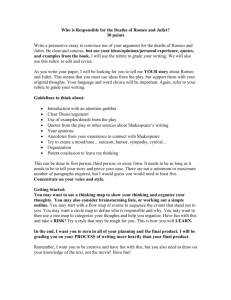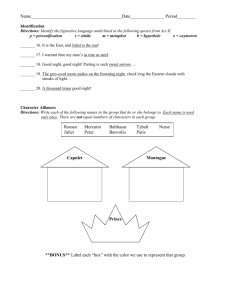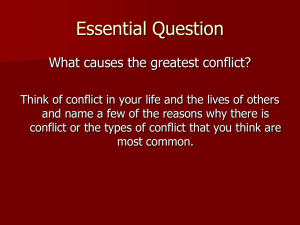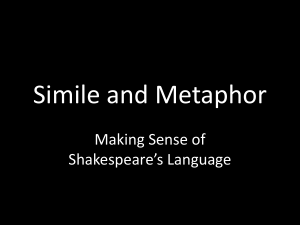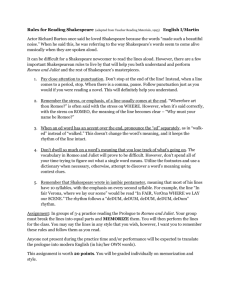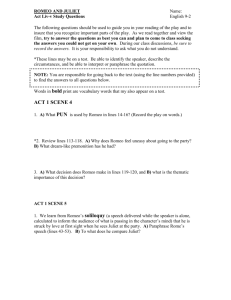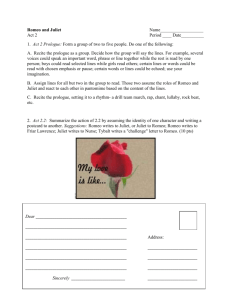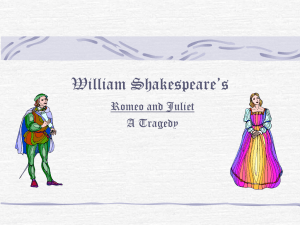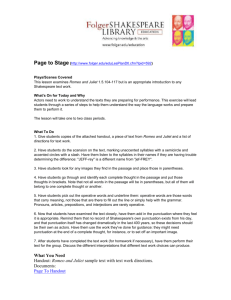Romeo and Juliet Lesson Unit
advertisement
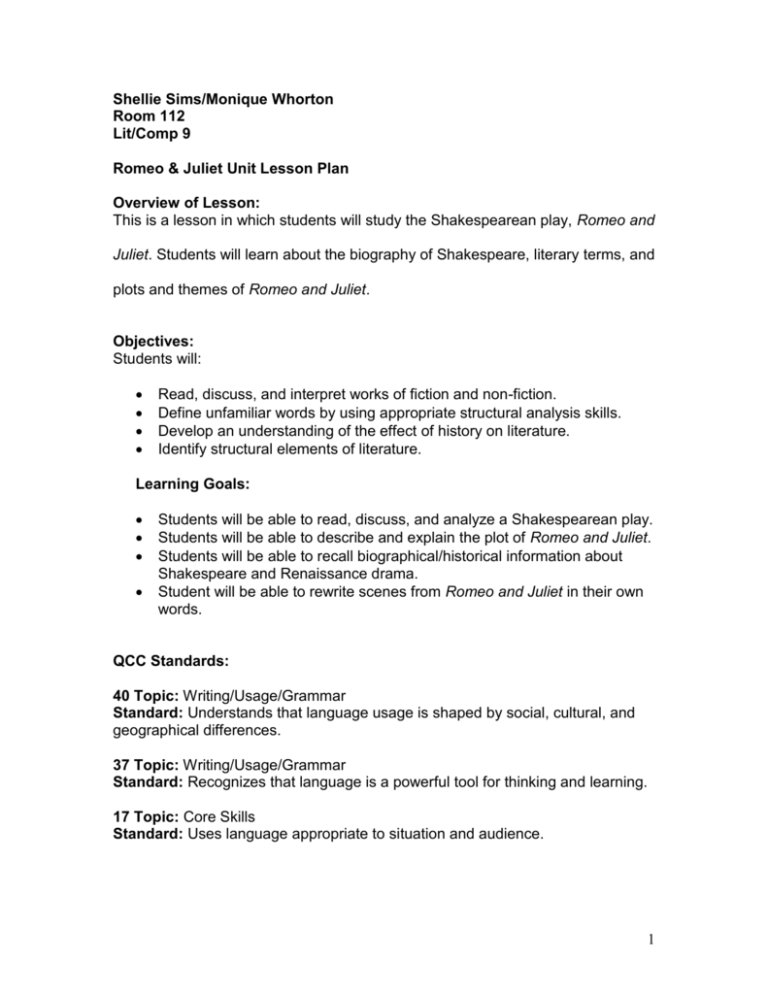
Shellie Sims/Monique Whorton Room 112 Lit/Comp 9 Romeo & Juliet Unit Lesson Plan Overview of Lesson: This is a lesson in which students will study the Shakespearean play, Romeo and Juliet. Students will learn about the biography of Shakespeare, literary terms, and plots and themes of Romeo and Juliet. Objectives: Students will: Read, discuss, and interpret works of fiction and non-fiction. Define unfamiliar words by using appropriate structural analysis skills. Develop an understanding of the effect of history on literature. Identify structural elements of literature. Learning Goals: Students will be able to read, discuss, and analyze a Shakespearean play. Students will be able to describe and explain the plot of Romeo and Juliet. Students will be able to recall biographical/historical information about Shakespeare and Renaissance drama. Student will be able to rewrite scenes from Romeo and Juliet in their own words. QCC Standards: 40 Topic: Writing/Usage/Grammar Standard: Understands that language usage is shaped by social, cultural, and geographical differences. 37 Topic: Writing/Usage/Grammar Standard: Recognizes that language is a powerful tool for thinking and learning. 17 Topic: Core Skills Standard: Uses language appropriate to situation and audience. 1 Materials/Resources: Text, Handouts, Pencils, Paper, White board, and overhead projector Time: 12 Class Days Pre-Assessment: Question students about their knowledge of Shakespeare’s biography, history of Renaissance theatre, and the plot of Romeo and Juliet. Engagement: The students will be shown a short film featuring interviews of current movie stars and multicultural students about how Shakespeare’s plays have influenced their lives. Activities/Procedures: Students will be shown a short film featuring interviews of current movie stars and multicultural students about how Shakespeare’s plays have influenced their lives. Students will participate in discussions on Shakespeare’s biography, the history of Renaissance theatre, and then fill out magic square sheets. Students will view clips from Shakespeare in Love, West Side Story, and Baz Luhrmann’s Romeo + Juliet. Students will listen to audio recordings of the play Romeo and Juliet. Students will participate in reading the play aloud. Students will read the play silently. Students will translate the balcony scene into their own words. Students will choose characters, found quotes from the play to sum up their characters, created a character wheel, and then illustrated the wheels. Students will write essays for a perfect mate exercise after reviewing questionnaires previously filled out with their parents/guardians. After a discussion on mood/theme/plot, students will bring in music pertaining to the play. Students will view the film Romeo and Juliet, pausing for discussion. Students will be allowed to write movie reviews and comparison/contrasts of West Side Story, Romeo + Juliet, Shakespeare in Love, and Romeo Must Die for extra credit. Students will take and end of unit test. 2 Lesson Modifications: The advanced class will be able to read chapters for homework while general level classes will have to be read to mostly (in class). More explaining will be necessary with the general level class. More activities will be implemented into the advanced unit due to time constraints. The advanced students will delve more deeply into themes and character studies. Technology Connections: A film will be shown introducing Shakespeare, and comparing different styles of production. Film clips and a full feature will be shown. Students will listen to some of the play in audio book form. Closure: As a closing activity, the students viewed the Zefferelli version of Romeo and Juliet. The film was frequently paused in order for the students to discuss differences in the film and the play, plot lines, and character traits. Assessment/Evaluation: Grades were given for various activities as well as the end of unit test. Post Lesson Reflections: Test results proved that the students learned a great about Romeo and Juliet, Shakespearean language. I wondered if I had made the test too easy, but my cooperating teacher assured me that “they learned something.” I was quite thrilled with the results, all A’s. Additionally, the students asked thoughtful questions throughout lessons, discussions, and film viewing. These questions reinforced that the students understood the language, plot lines, and characters of Romeo and Juliet. 3
